You might not realize how much your spine affects your daily life until discomfort sets in. With a proper understanding of spinal health, you can improve not only your posture but also your overall well-being. Poor habits like slouching or prolonged sitting can lead to serious issues, but few take the time to address them. What if you could easily incorporate small changes to enhance your spine's health? Let's explore how a few adjustments can make a significant difference in your life.
The Importance of Spinal Health
Spinal health is crucial for overall well-being, and you mightn't realize just how often it impacts your daily life. Your spine supports your body, allowing you to stand, bend, and move with ease. When your spine's in good shape, you'll notice you can engage in everyday activities, from playing sports to simply lifting groceries without discomfort.
Good spinal health also plays a critical role in your nervous system function. Your spine houses the spinal cord, which transmits signals between your brain and the rest of your body. If there's a problem with your spine, it can interfere with these signals, leading to pain, numbness, or weakness in various areas. This disruption can affect your mood, energy levels, and productivity, making it essential to prioritize spinal care.
Additionally, strong spinal health contributes to your posture. Poor posture can lead to a host of issues, including back pain, tension headaches, and decreased mobility. By maintaining a healthy spine, you're more likely to sit and stand correctly, reducing the risk of these problems.
Finally, don't underestimate the connection between your spine and your overall mental well-being. Physical discomfort can lead to stress and anxiety, while a healthy spine can enhance your mood and overall quality of life.
Common Causes of Spinal Issues
Maintaining good spinal health can be challenging, especially when you consider the common causes of spinal issues that many people face daily.
It's crucial to recognize these factors so you can take proactive steps to protect your spine.
1. Poor Posture: Slouching at your desk or leaning over your phone can put unnecessary stress on your spine. Over time, this can lead to misalignments and discomfort.
Make a conscious effort to sit up straight and keep your screen at eye level.
2. Sedentary Lifestyle: When you spend long hours sitting without movement, your muscles weaken, and your spine lacks support.
Incorporating regular physical activity into your routine can strengthen your core and improve spinal health. Aim for at least 30 minutes of exercise most days of the week.
3. Injury or Trauma: Accidents, falls, or sports injuries can lead to immediate spinal issues or cause problems that develop over time.
Be cautious during physical activities and use proper techniques to avoid injury. If you do experience an injury, seek medical advice to address the issue promptly.
Signs Your Spine Needs Attention
Your spine plays an essential role in your overall health, and recognizing when it needs attention is important. One of the first signs that your spine might be in trouble is persistent pain. If you experience discomfort in your back or neck that doesn't seem to improve with rest or over-the-counter pain relief, it's time to pay attention.
Another red flag is stiffness or reduced mobility. If you find it challenging to bend, twist, or stand up straight without discomfort, your spine may be signaling that it's time for a check-up. You should also be aware of any tingling or numbness in your arms or legs. These sensations can indicate nerve compression, which often stems from spinal issues.
If you notice a change in your posture, like slouching or leaning to one side, it could be a sign that your spine needs attention. Poor posture can lead to further complications down the line, so addressing it early is vital.
Additionally, if you're experiencing frequent headaches, especially tension headaches, they may be related to spinal misalignment.
Lastly, pay attention to any changes in your sleep patterns. If discomfort prevents you from sleeping well, it's a clear indication that your spine needs care. Trust your instincts; if something feels off, don't hesitate to consult a healthcare professional.
Benefits of a Well-Aligned Spine
A well-aligned spine offers numerous benefits that can greatly enhance your quality of life. When your spine is properly aligned, it helps improve your overall health, boosts your mood, and increases your energy levels. Here's how a well-aligned spine can make a difference:
- Pain Reduction: A properly aligned spine reduces stress on your muscles and ligaments, alleviating discomfort in your back, neck, and joints. With less pain, you can engage in activities you love without hindrance.
- Improved Posture: Good spinal alignment encourages better posture. When you sit and stand correctly, it can prevent strain on your muscles and joints, which means less fatigue throughout the day. You'll feel more confident, too!
- Enhanced Functionality: A well-aligned spine supports proper nerve function, leading to better communication between your brain and body. You'll experience improved coordination and balance, making daily tasks easier and reducing the risk of injury.
Incorporating habits that promote a well-aligned spine can lead to a healthier, more vibrant life.
Whether it's through regular exercise, stretching, or seeking professional care, you'll find that these small changes can yield significant benefits.
Prioritizing spine health not only enhances your physical well-being but also contributes to your emotional and mental health.
Tips for Maintaining Good Posture
Consistently practicing good posture can greatly impact your spinal health and overall well-being. To start, be mindful of your sitting position. Choose a chair that supports your back and keeps your feet flat on the floor. If you're working at a desk, adjust your chair and computer screen to eye level, so you're not straining your neck or slouching.
When standing, distribute your weight evenly on both feet. Keep your shoulders relaxed but not slumped, and engage your core. Imagine a string pulling the crown of your head upward; this simple visualization can help you maintain a straight spine.
While walking, practice swinging your arms naturally and keeping your head up. Avoid looking down at your phone or other devices, as this can lead to poor neck alignment. Instead, hold your phone at eye level, which encourages a more upright posture.
If you spend long hours sitting, take regular breaks. Stand up, stretch, and walk around every hour. This not only helps your posture but also promotes circulation and reduces stiffness.
Finally, pay attention to your posture while sleeping. Use a supportive mattress and pillows that keep your spine aligned. Sleeping on your back or side is generally better for spinal health than sleeping on your stomach.
Exercises to Strengthen Your Spine
Strengthening your spine is essential for maintaining good posture and preventing pain. A strong spine supports your entire body, allowing you to move freely and comfortably. Incorporating specific exercises into your routine can make a significant difference in spinal health.
Here are three effective exercises you can do at home:
- Cat-Cow Stretch: Start on your hands and knees in a tabletop position. Inhale as you arch your back, lifting your head and tailbone (Cow). Exhale as you round your back, tucking your chin and pelvis (Cat). Repeat for 10-15 cycles. This exercise improves flexibility and strengthens your core.
- Bird-Dog: Begin in the same tabletop position. Extend your right arm forward while simultaneously extending your left leg back, keeping your hips level. Hold for a few seconds, then switch sides. Aim for 10-12 repetitions on each side. This move enhances stability and engages your lower back muscles.
- Bridge: Lie on your back with your knees bent and feet flat on the floor. Press through your heels, lifting your hips toward the ceiling while squeezing your glutes. Hold for a few seconds, then lower back down. Repeat for 10-15 reps. The bridge strengthens your lower back, glutes, and hamstrings.
Incorporating these exercises into your routine isn't just beneficial; it's a proactive approach to spinal care.
Dedicate a few minutes each day to these exercises, and you'll notice improved posture and reduced discomfort over time.
Ergonomic Solutions for Daily Life
Maintaining a strong spine goes hand in hand with creating an ergonomic environment in your daily life. You can easily make adjustments to your workspace, your home, and even your daily routines to enhance comfort and reduce strain.
Start by evaluating your workstation. Confirm your chair supports your lower back, allowing your feet to rest flat on the floor. Your computer screen should be at eye level to prevent neck strain, and your keyboard should be positioned so your elbows remain at a 90-degree angle.
When you're out and about, pay attention to how you carry your bags. Use a backpack with padded straps, distributing weight evenly across your shoulders. If you prefer a handbag, switch sides often to avoid overloading one shoulder.
At home, consider your posture while doing chores or relaxing. If you're cooking, use a counter height that doesn't force you to hunch over. When watching TV or reading, choose supportive furniture that encourages good posture.
Additionally, take regular breaks to stretch and move around, especially if you're sitting for extended periods. Simple exercises, like shoulder rolls or gentle twists, can relieve tension and improve blood flow.
Lastly, stay mindful of your body's signals. If something feels off, adjust your position or your setup. By making these ergonomic changes, you'll not only support your spine but also enhance your overall well-being, enabling you to thrive in your daily life.
When to Seek Professional Help
Knowing when to seek professional help for spine-related issues is essential for your long-term health. If you're experiencing pain, discomfort, or any unusual symptoms, it's vital to listen to your body. Ignoring these signs can lead to more severe problems down the line.
Here are three key indicators that it's time to consult a healthcare professional:
- Persistent Pain: If you've had back or neck pain that lasts longer than a few days, it's time to get it checked out. Chronic pain can signal underlying issues that need attention.
- Numbness or Tingling: Experiencing numbness, tingling, or weakness in your limbs can indicate nerve compression or other serious conditions. Don't brush these sensations off; they warrant immediate evaluation.
- Loss of Mobility: If you find it increasingly difficult to perform everyday activities due to back pain or stiffness, don't hesitate to seek help. Reduced mobility can affect your quality of life and may lead to further complications.
Conclusion
Taking care of your spine isn't just a good idea—it's essential for your overall health. By staying aware of your posture, incorporating strengthening exercises, and using ergonomic solutions in your daily life, you can keep your spine in top shape. Don't ignore the signs that something's off; addressing issues early on can prevent bigger problems later. Remember, a well-aligned spine boosts your quality of life, so give it the TLC it truly deserves!



